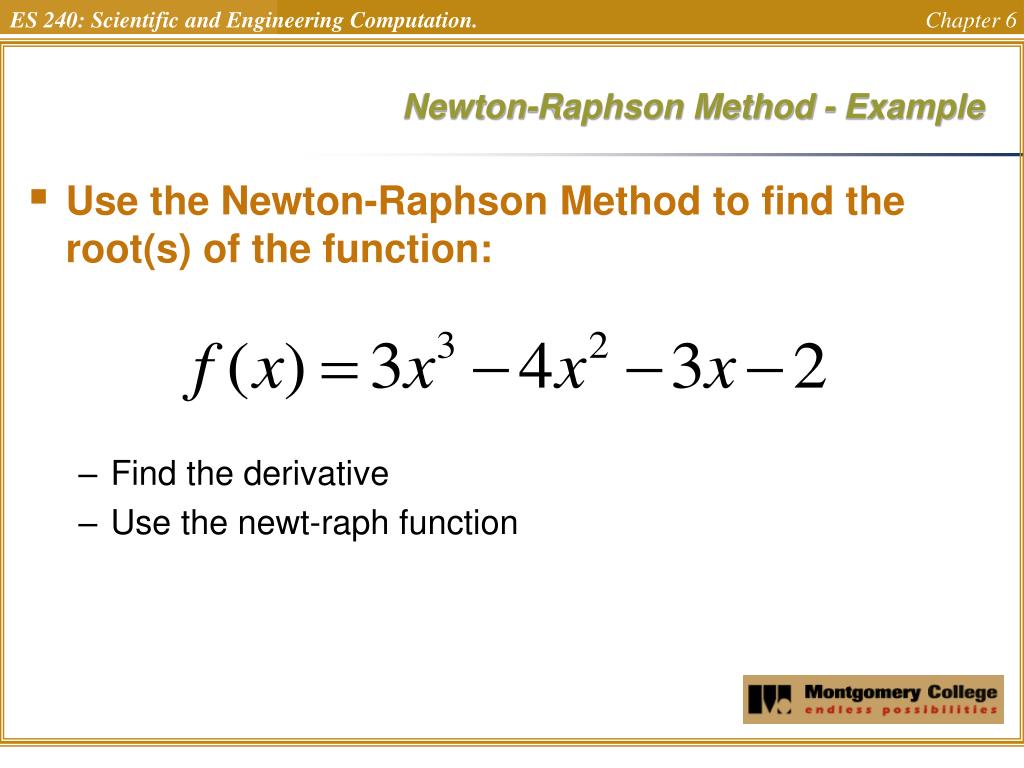

If we let the market price of an option be given by $C_M$ and the Black-Scholes function by $B(S, K, r, T, \sigma)$, where $S$ is the underlying price, $K$ is the option strike, $r$ is the risk-free interest rate, $T$ is the time to maturity, then we are trying to find the value of $\sigma$ such that: Our task for this article is to attempt to calculate implied volatilities using the Black-Scholes equation.

NEWTON RAPHSON METHOD BLACKSHOLES PROFESSIONAL
Professional traders actually tend to quote values of options in terms of their "vol", rather than their actual market prices. Implied volatilities can in fact be considered a form of "prices", as their values have been determined by actual transactions in the marketplace, not on the basis of statistical estimates. Given the need to continuously rebalance these portfolios, an option with a higher actual price can be cheaper in terms of its volatility if the underlying itself rises, as the underlying asset can be sold at a higher price. Options are often held in a delta neutral portfolio, which means that the portfolio is hedged for small moves in the price of the underlying asset. This is because the option price is heavily dependent upon the price of the underlying asset. The use of implied volatility is motivated by the fact that it is often more useful as a measure of relative value between options than the actual price of those options. In derivatives pricing, the implied volatility of an option is the value of the underlyings volatility (usually denoted by $\sigma$), which when input into an derivatives pricing model (such as with the Black-Scholes equation) provides a pricing value for the option which is equal to the currently observed market price of that option. In particular, we are going to consider the concept of Implied Volatility. In this article I want to discuss a practical application of the Black-Scholes model, design patterns and function objects in C++.


 0 kommentar(er)
0 kommentar(er)
